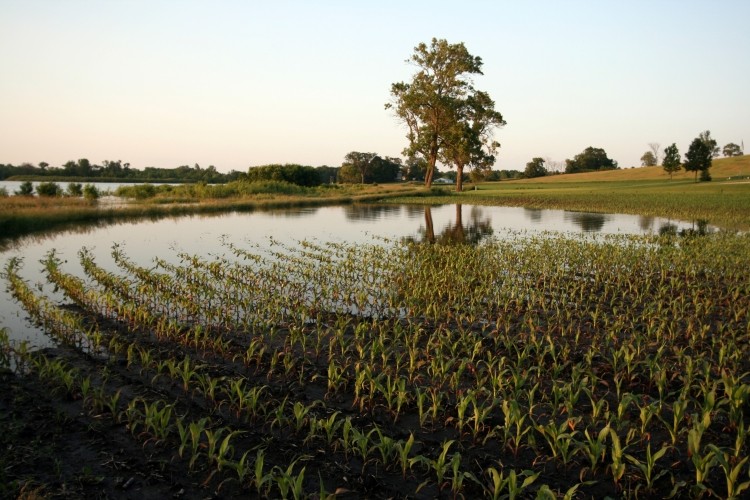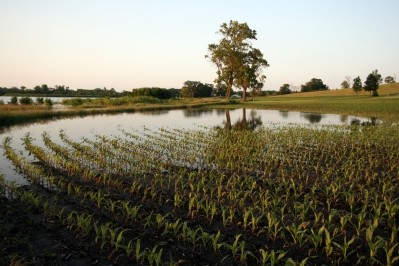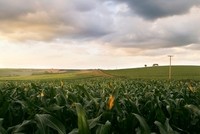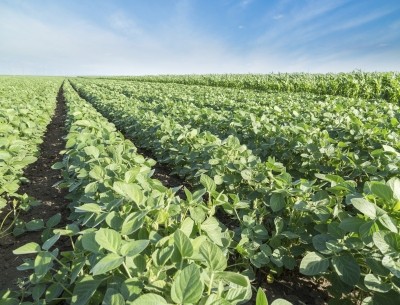USDA: Wet weather, flooding doesn’t damage overall US feed crop conditions

Overall corn and soybean scores have remained consistent or improved for the week ending August 21, said the USDA in a crop condition report, despite potential crop damage losses in some southern states, especially in Louisiana.
“The soybean acres planted in the affected areas of south central and central Louisiana have yet to be harvested,” said Michael Deliberto, assistant professor farm management and agricultural policy at Louisiana State University and LUS Agricultural Center. “Quality will be an issue with the soybean and grain sorghum crops when and if they are able to be harvested (in the affected area).”
“The corn harvest in northern Louisiana had been delayed with rains prior to this massive flooding event in the southeastern part of state,” he told FeedNavigator. “Corn producers are facing wet field conditions.”
“The LSU Ag Center is still compiling production loss estimates,” he said. And, the state also is facing about $33m losses for rice, he added.
Corn and soy condition
Overall corn crop condition for the 18 states that produce the majority of the US crop was considered 75% good or excellent, said the USDA. The result is an improvement on the prior week and over last year’s crop at this time.
A majority of the crop has reached the corn dough stage, the fourth production stage, said the department. About 85% of the crop has reached that stage, ahead of the average and where the crop was at this time last year.
Iowa, Minnesota, Missouri, North Carolina, Tennessee and Texas have crops that have reached or surpassed 90% in the corn dough stage, the department said.
Additionally, about 40% of the feed crop has reached the corn dent stage, the fifth stage of production, the department said. At the state level, North Carolina, Tennessee and Texas have the largest percentage of their crops the furthest along.
The soybean crop remained steady with 72% of the crop reported being good or excellent for the week ending August 21, said the USDA. The condition currently surpasses last year’s 63% for this time of year.
The soybean crop also continues to be ahead of previous years in terms of development, the department said. About 89% of the crop has reached the pod setting stage compared with 85% at this time last year, and as a multi-year average.
States with a crop where 90% or more has reached the pod setting stage include Arkansas, Iowa, Louisiana, Minnesota, Mississippi, Nebraska, North Dakota, Ohio, South Dakota and Wisconsin, the department said.
Other feed crops
The majority of the sorghum crop continues to be listed as good or excellent with 65% of the crop earning that rating, said the USDA. The score is consistent with last week, but slightly behind the 68% that earned the rating at this time last year.
About 52% of the crop has reached the coloring stage, the department said. The rate is ahead of last year and the multi-year average.
Of the 11 stages responsible for the majority of US production, only Louisiana’s crop had completely reached that production level, it said. And about 93% of that state’s crop was considered mature.
Overall, 29% of the US sorghum crop has reached maturity, the department said.
So far about 65% of the spring wheat crop has been harvested, said the USDA. And about 89% of the oat crop also has been collected.
About 70% of the barley crop also has been gathered, the department said. The crop is being harvested behind last year’s production rate, but ahead of the multi-year average.
Pasture and range conditions for the 48 continental states have been rated at 51% good or excellent, which marks a slight drop from last year’s score at this point in the year, the department said.













